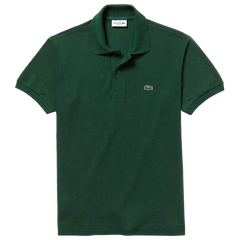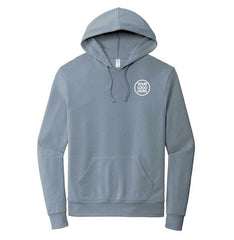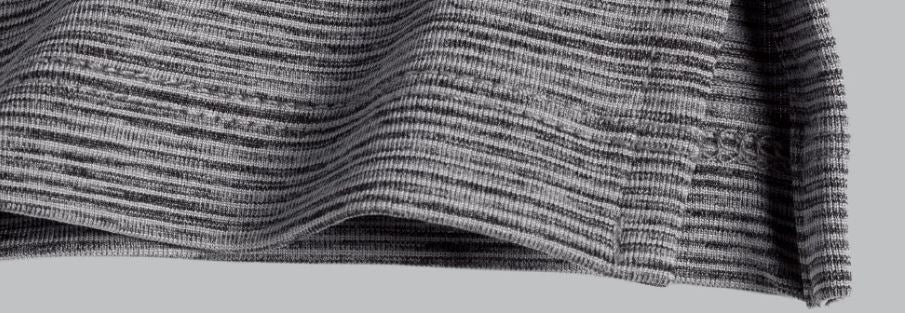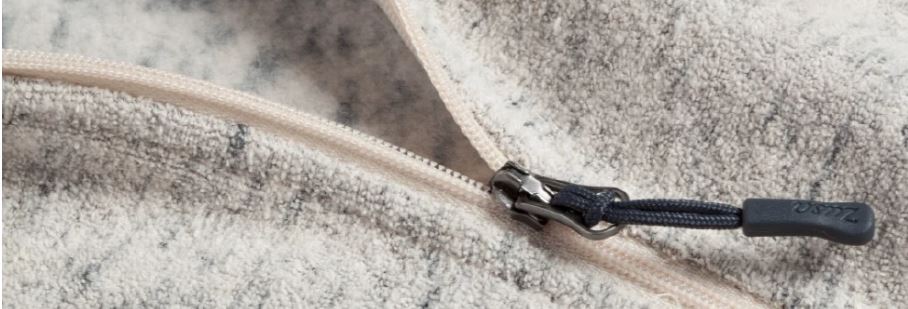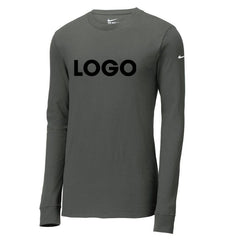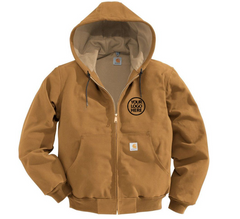Choosing the Right Fabric for Corporate Apparel
Choosing the Right Fabric for Corporate Apparel

Which Fabric is Right for My Corporate Apparel?
When you're shopping for new logo branded clothes for your company, determining the proper fabric type is just as important as choosing the right size and color. With so many different kinds of fabric available it can be hard to know what's best for your team's needs. That's why we made this comprehensive guide to the most popular fabrics used to make custom corporate clothing and accessories. Click on a button below to jump to that fabric type, then click into each fabric type to see branded apparel and products made from that kind of material!
Use the menu below to jump to different fabric types!

Popular Fabrics for Corporate Apparel
There are dozens of different fabrics and blends that are commonly used to make custom apparel and company branded accessories. Each kind of fabric comes with different advantages and disadvantages that you should be aware of before you make a decision for your department. Read below for a quick overview of each fabric type for the perfect logo branded piece for your crew!
Cotton
Cotton is a plant-based natural fiber that has been the go-to choice for custom clothing for thousands of years. There are a few reasons that cotton is the most popular fabric for apparel. Cotton is inexpensive, strong, and easy to clean. Plus, cotton is extremely versatile and can be transformed into many other fabric classifications like Ring-spun Cotton, Cotton Duck, Cotton Canvas, Terry Cloth, Denim, and Flannel.
Cotton Fabric is Commonly Used For...
Advantages of Cotton Fabric
- Comfortable
- Breathable
- Hypoallergenic
- Low Maintenance
- Easy to Decorate
- Machine-Washable
Disadvantages of Cotton Fabric
- Does not dry quickly
- Prone to shrinking
Examples of Cotton Products
Polyester
Polyester might look simple, but it's actually somewhat of a chemistry project! Polyester is a man-made synthetic fiber that's made from a chemical reaction involving air, water, and petroleum. That combination produces an artificial fiber that becomes polyester! Polyester is also thermoplastic, so it can be melted down and reformed shapes, like thread. That thermoplasticity is what makes polyester so stretchy. I bet you didn't come here expecting a science lesson!
Polyester Fabric is Commonly Used For...
Advantages of Polyester Fabric
- Flexible
- Quick-Drying
- Moisture-Wicking
- Wrinkle-Resistant
- Durable
- Comfortable
- Machine-Washable
Disadvantages of Polyester Fabric
- Can stick to sweaty skin
- Sensitive to high temperatures
- Not as breathable as cotton
- Usually not sustainable
Is Polyester Sustainable?
The way that polyester is normally made is not sustainable or good for environment because the process requires the use of fossil fuels. However, there are ways that polyester can be extremely sustainable too! It's not the cheapest way to make polyester, but you can actually create it from recycled materials like plastic water bottles. When polyester is made this way it's not only eco-friendly, it also prevents plastic from reaching landfills and oceans!
Examples of Polyester Products
Wool
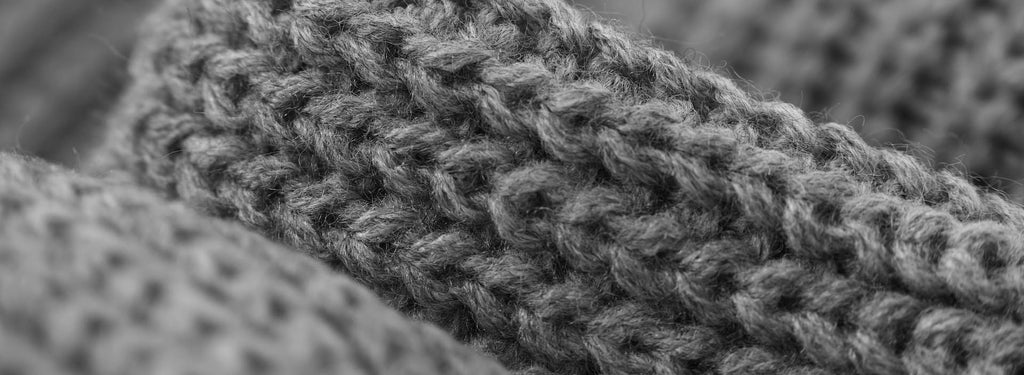
So if cotton comes from plants and polyester comes from science then where does wool come from? Most people know that wool can come from sheep, but wool can also be made from the coat of goats (known as cashmere), alpacas, llamas, camels, musk oxen (qiviut), and even rabbits (angora wool)! To create wool these living animals coats are sheared, cleaned, scoured, and spun into yarn. That wool yarn can then be weaved into clothing garments, blankets, and more.
Wool Fabric is Commonly Used For...
Benefits of Wool Fabric
- Warm and Insulating
- Wrinkle-Resistant
- Moisture-Wicking
- Odor-Resistant
Disadvantages of Wool Fabric
- Prone to shrinking
- Can feel scratchy on skin
- Requires special care/ dry cleaning
Examples of Wool Products
Fleece
Fleece isn't as much of its own fabric type as it is a classification of the other fabric types that we've addressed at this point. There's cotton fleece, polyester fleece, wool fleece, and other lesser used varieties of fleece. All types of fleeces have a few things in common though; they're soft, fuzzy, warm, and insulating. That's what makes fleece the ideal material for corporate sweaters, custom embroidered vests, company jackets, and logo branded sweatshirts. Fleece also breathes and wicks moisture very well for an insulating material, so it's great as branded outerwear too!
Fleece Fabric is Commonly Used For...
Benefits of Fleece Fabric
- Comfortable
- Breathable
- Water Repellent
- Hypoallergenic
- Warm and Insulating
Disadvantages of Fleece Fabric
- More difficult to clean
- Can retain odors
- Pilling can be an issue
Examples of Fleece Products
Sherpa and Shearling
Technically speaking, sherpa and shearling are two entirely different fabrics. Shearling is a form of wool sheared from a lamb that has only had one shearing, while sherpa is actually a blended fabric made from polyester, acrylic, or cotton. Sherpa fabric gets its name from its similarity to the wooled clothing worn by the Sherpa people of Nepal, but it is often called "faux shearling" for its similarity to shearling fabric. For this reason we've combined them into the same fabric category.
Shearling and Sherpa Fabric is Commonly Used For...
Benefits of Sherpa Fabric
- Soft
- Warm and Insulating
- Moisture-Wicking
- Machine-Washable
Disadvantages of Sherpa Fabric
- Gets dirty easily
Examples of Shearling and Sherpa Products
Spandex / Lycra / Elastane

Did you know that spandex got its name because it's an anagram for the word "expands"? You learn something new everyday. It makes sense though, the primary benefit of spandex as a fabric is its unparalleled elasticity. Also known as elastane or lycra, spandex is the stretchiest, most flexible corporate apparel fabric around. So much so that a little goes a long way. You usually won't see apparel fabric that's made from more than 15% spandex, even in compression apparel and yoga pants. That's because spandex-heavy fabrics don't let your skin breathe very well.
Spandex Fabric is Commonly Used For...
Advantages of Spandex Fabric
- Stretchy and flexible (4-way stretch)
- Moisture-Wicking
- Durable
- Comfortable
Disadvantages of Spandex Fabric
- Doesn't let your skin breathe
- Sensitive to heat
Examples of Spandex Products
Leather
Aside from wool, leather is the only type of clothing material that comes from mammals. Leather can be made from the hides of many animals including cows, pigs, sheep, goats, alligators, and more. Cow hides are by far the most popular animal hide used to create real leather. To create leather, hides are stripped of hair and flesh, dried, salted, tanned, dyed, and finished with a finishing spray. This process may sound inhumane, but the animal hides are a byproduct of the meat and dairy industries that would otherwise be wasted if not turned into leather. It is extremely rare for cows to be killed only for their hides.
Leather is Commonly Used For...
Advantages of Leather
- Tough
- Durable
- Timelessly Stylish
Disadvantages of Leather
- Can get stretch marks
- Not breathable
- Can be expensive
Examples of Leather Products
Silk
Here's another fabric that comes from nature, although not in the way that you might expect. Silk is a natural protein fiber that is produced by silkworms. Silkworms are actually larvae of silk moths and silk is what they use to make their cocoons. Sounds pretty gross, right? Despite its unpleasant origins, silk is one of the most luxurious and desirable fabrics around. That's because silk is one of the smoothest and softest fabrics on the planet.
Silk Fabric is Commonly Used For...
Benefits of Silk Fabric
- Soft and Smooth
- Comfortable
- Strong
Disadvantages of Silk Fabric
- Expensive
- Stains easily
- Requires special care/ dry cleaning
Examples of Silk Products
Cashmere
If you noticed that we teased the origins of cashmere earlier in the wool section, congratulations, you've been paying close attention! Cashmere is a form of wool that comes specifically from the coat of cashmere goats. Cashmere goats are a rather regal looking breed of goats whose origins trace back to the Himalayan region of Kashmir. Save that one for trivia night. Like wool, cashmere is formed by shearing the coats of the animals and spinning them into yarn that's used to create clothing.
Cashmere Fabric is Commonly Used For...
Advantages of Cashmere Fabric
- Soft
- Warm and Insulating
- Lightweight and Breathable
- Wrinkle-Resistant
- Elegant
Disadvantages of Cashmere Fabric
- Not very durable
- Pilling can be an issue
- Requires special care/ dry cleaning
Examples of Cashmere Products
Linen

Linen fabric clothing is known for being especially lightweight and breathable, making it the perfect fabric for hot summer days. Like cotton, linen fabric is made from plants. In the case of linen, its fibers from the flax plant called "Linum Usitatissimum" that are spun, combed, and woven into sheets. Linen material is ideal for corporate branded dress shirts, custom company hats, branded journals and notebooks.
Linen Fabric is Commonly Used For...
Advantages of Linen Fabric
- Breathable
- Comfortable
- Durable
- Low Maintenance
- Machine-Washable
Disadvantages of Linen Fabric
- Wrinkles easily
- Prone to shrinking
Examples of Linen Products
French Terry / Terry Cloth
French terry, or terry cloth, is a form of cotton fabric that's popular for loungewear and towels. The way that french terry fabric is made causes one side of the fabric to be smooth and soft while the other side features loops and soft piles of yarn. The soft piles are super comfy on your skin, so that side of the fabric is almost always on the inside of the garment. Popular french terry apparel items include corporate french terry sweatshirts, custom french terry pullovers, logo branded robes, and more! Those piles are also very absorbent, so they're great for logo branded towels too.
French Terry Fabric is Commonly Used For...
Benefits of French Terry Cloth
- Comfortable
- Highly Absorbent
- Flexible
- Midweight
Disadvantages of French Terry Cloth
- Prone to fraying
- Too thick for warmer climates
Examples of French Terry Products
Nylon

Here's another synthetic fabric with an interesting history. Up until World War II, Nylon was only used for toothbrush bristles. Then the US military started using nylon for parachutes and it instantly became one of the most popular fabrics in America. The reasons that nylon was a great material for parachutes are the same reasons that nylon works well for custom raincoats, logo branded jackets, corporate backpacks, and duffel bags too - ripstop nylon is extremely tough, durable, and water-resistant.
Nylon Fabric is Commonly Used For...
- Rain Jackets
- Windbreakers
- Sweatshirts, Hoodies, and Quarter Zips
- Hats
- Backpacks
- Duffel Bags
- Workwear
- Uniforms
Advantages of Nylon Fabric
- Waterproof
- Wind-Resistant
- Versatile
- UV Protective
- Doesn't shrink
- Tough and durable
Disadvantages of Nylon Fabric
- Not very breathable
- Can be difficult to clean
Examples of Nylon Products
Hemp
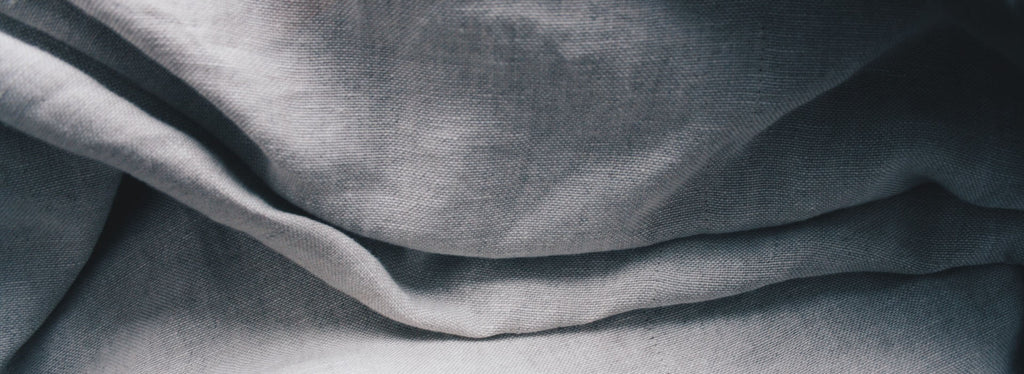
Yes, hemp is made from cannabis plants. No, hemp is not marijuana. Hemp is a strain of the Cannabis sativa plant that's harvested and spun into yarn. Hemp is actually one of the first plants that were ever spun into fiber for yarn more than 10,000 years ago. Hemp plants are also among the fastest growing plants, making them a great source for fabric. Hemp material creates a perfect backdrop to showcase your company's unique logo on logo branded hats, corporate tote bags, branded t-shirts, and more! However, the perception that hemp is marijuana has prevented it from becoming a more popular fabric for apparel.
Hemp Fabric is Commonly Used For...
Advantages of Hemp Fabric
- Sustainable
- Strong
- Hypoallergenic
- Breathable
- UV Resistant
Disadvantages of Hemp Fabric
- Wrinkles easily
- Can be scratchy
Examples of Hemp Products
Quilted Fabric

Quilted fabric is more of a technique than a fabric type, but it still comes with its own set of pros and cons. Quilting is done by sewing two layers of fabric, usually cotton or blended fabric, together to create a thick and padded material. In between the two layers of fabric there is usually an insulating material like wool or cotton. The material is sewn in a cross-hatch style pattern to prevent the insulating material from sinking to the bottom of the garment.
Quilted Fabric is Commonly Used For...
Advantages of Quilted Fabric
- Warm and insulating
- Comfy
- Packable
Disadvantages of Quilted Fabric
- Can retain moisture longer
- Not among the most durable fabrics
Examples of Quilted Fabric Products



Sueded Fabric
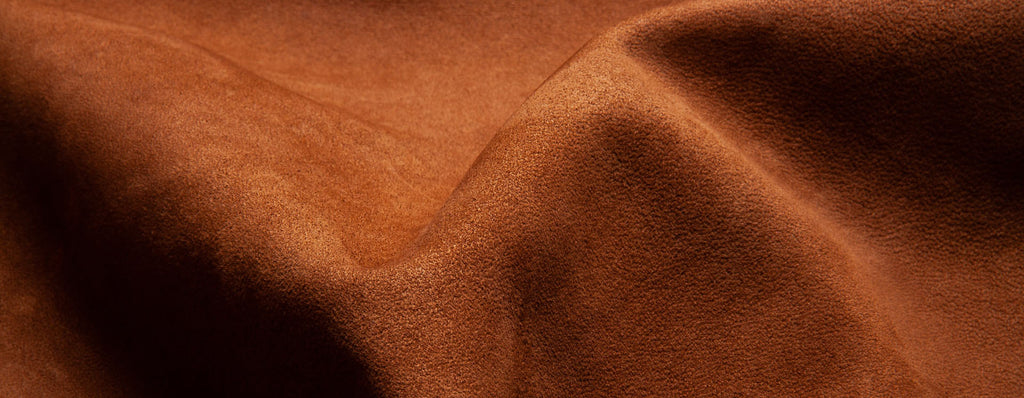
Not to be confused with suede, which is a form of soft leather with a napped finish, sueded fabric is usually made from cotton or silk. The fabric is then brushed or sanded to give it a smoother finish, similar to suede. Brushed sueded fabric is softer to the touch than unbrushed fabric, making it especially ideal for shirts that make direct contact with the skin.
Sueded Fabric is Commonly Used For...
Benefits of Sueded Fabric
- Soft and smooth
- Comfortable
- Durable
Disadvantages of Sueded Fabric
- Easier to damage
Examples of Sueded Fabric Products
Denim
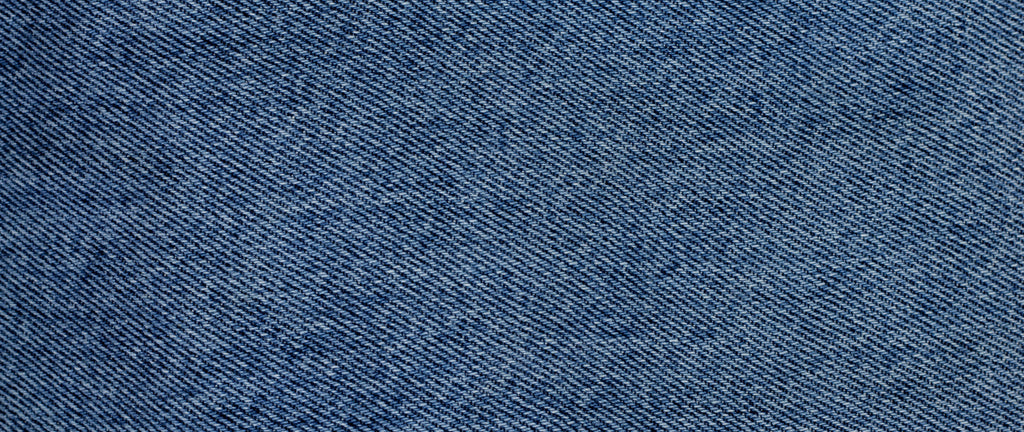
Did you know that denim is made from 100% cotton? It doesn't seem possible that your blue jeans and t-shirts could come from the same plant, but that's the case! Denim is made by a specific method of twill weaving that creates a diagonal twill line. This method of weaving is what makes denim feel stronger and sturdier than traditional cotton garments. Aside from the classic pair of jeans, denim material is great for custom denim long sleeve shirts, logo branded denim tote bags, corporate denim hats, and more!
Denim Fabric is Commonly Used For...
Benefits of Denim Fabric
- Tough and durable
- Does not shrink
Disadvantages of Denim Fabric
- Warm and insulating
- Stretches out over time
- More difficult to decorate
Examples of Denim Products
Flannel
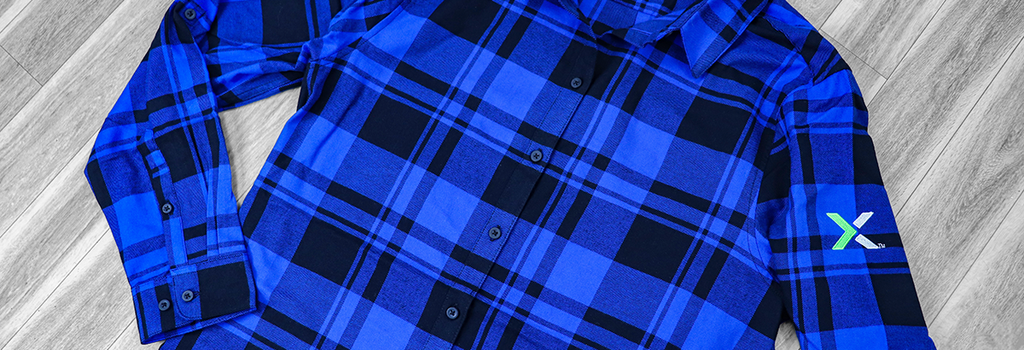
Flannel is another form of cotton, but unlike denim, flannel is a soft woven fabric with an extra dash of warmth. Flannel is also often brushed for added softness. This level of softness makes flannel an especially comfortable material, making it ideal for corporate branded shirts, cozy inner linings on custom jackets, and logo branded blankets. Flannel is also made from wool on some occasions, although it tends to be a little scratchier in that case.
Flannel Fabric is Commonly Used For...
Advantages of Flannel Fabric
- Soft and comfy
- Warm and insulating
- Breathable
Disadvantages of Flannel Fabric
- Pilling can be an issue
- Prone to shrinking
Examples of Flannel Products
Cotton Canvas
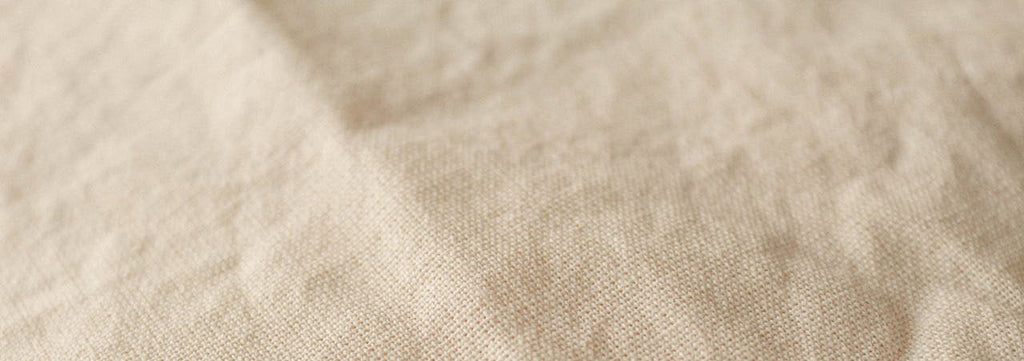
Canvas is an extremely strong and durable form of cotton that was originally created for use in boat sails and tents. To create canvas an extremely compact and firm weave of cotton is performed. The term canvas is usually reserved for accessories like corporate canvas totes, logo branded canvas hats, and custom canvas backpacks. Cotton duck is another form of canvas, which typically refers to clothing applications for canvas.
Cotton Canvas Fabric is Commonly Used For...
Advantages of Canvas Fabric
- Tough and durable
- Waterproof
- Windproof
- UV Protective
Disadvantages of Canvas Fabric
- Expensive
- Can be scratchy on skin
- Not very breathable
Examples of Canvas Products
Ring-Spun Cotton
You might not know the difference between standard cotton and ring-spun cotton by just looking at it. The difference is that ring-spun cotton is made from yarn that is spun differently to create longer strands that are softer and more durable than those of regular cotton. You can think of ring-spun cotton as "super cotton" if you'd like. This kind of quality obviously comes at a premium though.
Ringspun Cotton Fabric is Commonly Used For...
Benefits of Ringspun Cotton Fabric
- More durable than cotton
- Softer than cotton
Disadvantages of Ringspun Cotton Fabric
- More expensive than cotton
- Prone to snarling
Examples of Ringspun Cotton Products
Cotton Duck Fabric

Similar to cotton canvas, cotton duck material is made using an extremely compact weave of cotton. In fact, cotton duck is woven even more tightly than cotton canvas. A tighter weave means added strength and durability. That's what makes cotton duck so ideal for work jackets and industrial workwear. Commonly used by popular workwear brands such as Carhartt, Dri Duck gear, and Drake Waterfowl apparel.
Cotton Duck is Commonly Used For...
Benefits of Cotton Duck Fabric
- Tough and durable
- Resistant to snagging and tearing
- Windproof
- UV Protective
- Loosens up and gets more comfortable with use
Disadvantages of Cotton Duck Fabric
- Fades in sunlight
- Prone to shrinkage
Examples of Cotton Duck Products
Blended Fabric
When you read the tags on your clothing it is pretty rare to find just one type of fabric. Sure, you'll come across your fair share of 100% cotton and 100% polyester garments, but most clothing is made from blended fabric. For example, the t-shirt that you see below is made from 95% recycled polyester and 5% spandex. This blend was chosen because this shirt is designed for workouts. The polyester fabric makes the shirt moisture-wicking, while the added spandex makes it more flexible. All fabrics come with advantages and disadvantages and blending them can produce an even better product.
Fabric Properties & Characteristics
Knowing the names of each fabric type is great, but this isn't a vocabulary test. What's really important to know is what each fabric type does. How does it perform? What is its purpose? Every fabric and material in your clothes is there for a reason. Here are a few of the most sought after fabric features.
Sustainable Fabric
Fabrics and materials are deemed eco-friendly and sustainable for a few different reasons. One way that a product can be considered sustainable is if it's made from recycled materials like recycled cotton or polyester made from recycled plastic water bottles. Another way that fabric can be considered sustainable is if it's made from plants that don't require much water or pesticides. Both hemp and flax plants (used to make linen fabric) can be grown using minimal resources.
What are the most sustainable fabrics?
Moisture-Wicking Fabric
Moisture-wicking fabric use built-in miniscule capillaries to extract moisture from the surface of your skin and transport it to the exterior of the fabric for easy wicking and quicker evaporation. Sweat-wicking fabric is perfect for logo branded activewear, company sports team uniforms, custom outerwear for hiking and camping, or any other clothing that you work out in. Because no one wants to exercise in a shirt that's drenched in sweat!
What are the best moisture-wicking fabrics?
UV Protective Fabric
Technically speaking, anything that gets between your skin and the sun is protecting you from harmful UV rays. Well, aside from magnifying glasses. However, some fabric features contribute to high UPF protection. For example, dyed fabrics, especially dark colors, increase UPF protection. Dense, tightly woven fabrics also do a better job blocking out the sun's harmful rays than looser fabric. Cotton, linen, and hemp are the least useful in blocking UV rays. Check out some of the custom polo shirts with UV Protection, corporate UV blocking dress shirts, and sun blocking branded jackets to find the perfect bulk company piece to suit your team's style.
What are the best fabrics for UV protection?
Stretchy Fabric
Do you ever feel like your clothing is restricting your movements? That's the worst. Luckily, flexible fabrics that stretch as you move are becoming more popular every year. One of the main reasons that polyester and spandex are added to blended fabrics are for a little added stretch.
The two main classifications of stretchy fabric are 2-way stretch and 4-way stretch fabrics. 4-way stretch fabric is the best type for fitness apparel because it can extend in both directions and return to its original shape without permanently stretching out. Jersey knit fabrics get their stretchiness due to the simple fact that they're knitted rather than woven.
What are the most flexible fabrics?
Water-Resistant Fabric
Water resistance means that a fabric is resistant to water molecules penetrating its surface, therefore the fabric doesn't get wet. Water-resistant (hydrophobic) fabrics can either be inherently water resistant or can be treated to become water repellant. Fabrics like nylon and micro suede polyester can be woven tightly enough so that water has a difficult time penetrating it.
Fabrics can also be treated with a durable water repellent (DWR) finish. The DWR coating is typically fluoropolymer based. DWR treatments can wear off over time and should be reapplied for your garment to retain its water resistance. An ideal choice for companies that often work outside or host outdoor charity events, custom water-resistant jackets, corporate water-resistant bags, and logo branded water-resistant vests are ready to complete your team look.

What are the most water resistant fabrics?
Wrinkle Resistant Fabric
There are a few factors that can increase a fabric's resistance to wrinkling, namely the weave, weight, and composition of the fabric. Denser and more complex weaves, like the weaves seen in thicker dress shirts, tend to be more wrinkle-resistant than simpler and more lightweight weaves. Synthetic materials like polyester, nylon, and spandex are extremely wrinkle-resistant, while natural fabrics like cotton, linen, and hemp wrinkle easily. One natural fabric that does stay wrinkle free is wool, especially merino wool.
What are the most wrinkle-resistant fabrics?
Flame Resistant Fabric
Wool is widely considered the most flame resistant natural fabric. Tightly woven cotton types like cotton duck and cotton twill are also effective as flame resistant fabric. There are some fabrics that are technically flame resistant, as in they won't burn, but are still not safe to wear around heat sources because they will melt. These include synthetic fabrics like acrylic, polyester, and nylon. Extensive research should always be done before ordering FRC. Check out our safety apparel guide for more information.
What are the most fire-resistant fabrics?
High Visibility Fabric
The term hi-vis really applies more to the bright colors of the clothes rather than fabric types. Hi-vis fabrics are typically fluorescent yellow, green, or orange. These vibrant shades help draw attention to those out along the road whether they're working hard or just working out! On the other hand, fabrics CAN have reflective qualities. Sometimes thin layers of metals like aluminized mylar are even added to increase the reflectivity of the material. Check out some of the most popular hi-vis clothing items such as custom hi-vis vests, bright and durable hi-vis jackets, and corporate hi-vis polo shirts to keep your crew safe!
What are the best hi-vis fabrics?
How to Decorate Different Fabric Types
Ever since humans started weaving fabrics into clothing they've been looking for ways to make their garments unique. There's no better way to differentiate your apparel from the rest than by adding your corporate logo or custom design. Luckily, that's what we're all about here at Merchology. Our in-house team of fabric decoration experts can add your logo to a wide range of fabrics using over 10 customization techniques. Let's take a look at which popular decoration methods work best for each fabric type.
Screen Printing
Silk screen printing is one of the oldest decoration methods around. Screen printing is performed by applying ink to fabric through a mesh screen. Everyone in the screen printing industry will tell you that silkscreen printing works the best on cotton fabric by far. You can screen print on polyester, but it does require special inks and additives.
Silk Screen Printing is a suitable decoration method for:
Screen Printing is Commonly Used to Decorate:
Embroidery
Embroidered designs are made by applying layers of thread to fabric with an embroidery machine. Custom embroidery can be performed on just about any fabric that a needle can pass through. One thing to remember with embroidery is that it does put tiny holes in the fabric, so it can compromise the water resistance of waterproof clothing.
Embroidery is a suitable decoration method for:
- Cotton (All Types)
- Polyester
- Linen
- Fleece
- Wool
- Acrylic
- Sherpa
- Cashmere
- Nylon
- Canvas
- Chambray
- Duck Fabric
- Blended Fabric
Embroidery is Commonly Used to Decorate:
- Custom Polos
- Custom Sweatshirts
- Custom Jackets
- Custom Pants
- Custom Hats
- Custom Backpacks
- Staff Uniforms
Heat Transfer
Also known as thermal printing, heat transfer takes a pre-printed image and applies it to your fabric. As the name suggests, your image is applied through heat in the heat transfer printing process. That means heat transfer is not suitable for flammable fabrics, like silk, and synthetic fabrics that can melt like polyester and spandex. Heat transfer can be performed on polyester, but should be done on a lower heat setting.
Heat Transfer is a suitable decoration method for:
Heat Transfer Printing is Commonly Used to Decorate:
- Custom T-Shirts
- Custom Polo Shirts
- Custom Hoodies
- Custom Sweatpants
- Custom Athletic Shorts
- Custom Backpacks
- Custom Performance Apparel
- Staff Uniforms
Digital Printing
Digital printing is a newer decoration method that is used to achieve a higher level of detail and a larger variety of colors than screen printing. It's also easier to set up and cheaper for smaller order sizes. The downside? DTG printing can ONLY be done on 100% cotton materials.
Digital Printing is a suitable decoration method for:
Digital Printing is Commonly Used to Decorate:
Dye Sublimation
Dye sublimation is a form of heat transfer in which dye-sub graphics are digitally printed and then heated to transfer your image to your product on a molecular level. A good way to remember what fabric are okay for dye sublimation? Think man-made fabric only. Remember, dye sublimation inks do not work on cotton!
Dye Sublimation is a suitable decoration method for:
- 100% Polyester
- Nylon Fabric
- Spandex Fabric
Dye Sublimation is Commonly Used to Decorate:
- Custom T-Shirts
- Custom Polo Shirts
- Custom Sweatshirts
- Custom Backpacks
- Custom Activewear
- Employee Uniforms
Debossing
Debossing is essentially an advanced form of heated stamping. Debossing is achieved by laser engraving a metal plate with your logo or design, heating it up, and pressing it into the surface of your product. A debossed logo or design has nice dimensional depth and will never flake off or fade away, making it the most durable decoration method.
Debossing is a suitable decoration method for:
Debossing is Commonly Used to Decorate:
Contact Us
Now that you've touched on all of the popular fabric types used in clothing, read up on fabric features, and learned about the decoration methods best suited for each fabric type it's time to start shopping! Be sure to check out our other apparel and gift buying guides for more information that you can use to impress your friends.
































